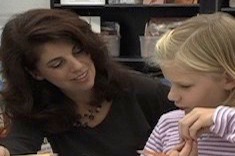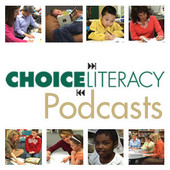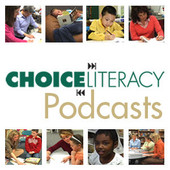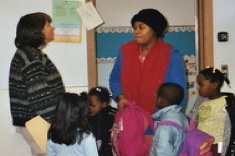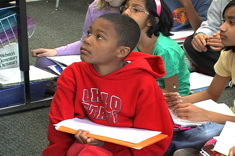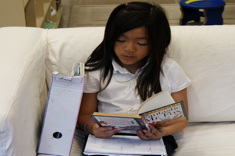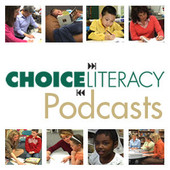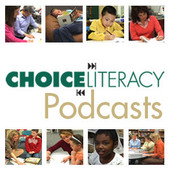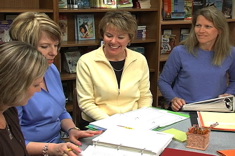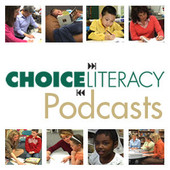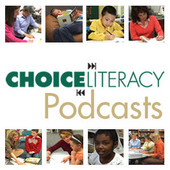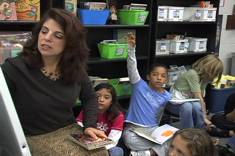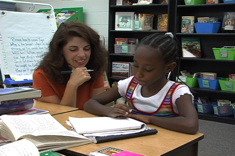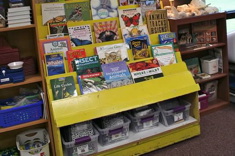Articles
Here is where you’ll find all the latest print features from our contributors. If you’d like to browse specifically by grade level, topic, or contributor, you can use the links in the right sidebar.
Latest Content
Image of the Week: Building a Classroom Community Through Visual Literacy
Teachers know visual learners are in every classroom, and Andrea Smith is no exception. She uses an “image of the week” to get at high expectations, observations, publishing, and, of course, building community.
Mentor Texts for Organizing Writing
We think of mentor texts for teaching literary elements, but what about for organizing? Aimee Buckner describes how she selects books to demonstrate a range of ways to organize writing and help students make choices independently.
The Art of Slow Reading: A Conversation with Tom Newkirk (PODCAST)
In this podcast Brenda Power talks with Tom Newkirk about what has been lost and what is truly meant by “slow reading.”
Teaching Poetry to Teens with the William Stafford Archives
Erin Ocon highlights the life and work of William Stafford and how she uses the archives of his work to bring poetry alive for her middle school students.
Spelling Rules — Or Does It?
Heather Rader introduces a new spelling series and maps out the topics she’ll be tackling.
Katherine Casey on Coaching in Classrooms (PODCAST)
In this podcast, Katherine Casey shares her wisdom on classroom modeling for coaches that really works because both teacher and coach have clarity on the purpose and practice.
Finding Time for Your Writing with Ruth Ayres (PODCAST)
In this podcast, Ruth Ayres is no stranger to working hard to find time to write, but that’s why it’s important that we do.
Three Rules Worthy of Spelling Inquiry
It seems like every spelling rule has an exception — so which ones must be taught? Heather Rader shares the three spelling rules worth any teacher’s time.
What’s the Evidence?
Heather Rader shares her experiences working with a teacher team led by an outspoken leader. With listening and support, the team examines evidence in a new way.
Top 10 Technology Tools for Teachers
If you're overwhelmed with the slew of new technology tools coming out all the time (and who isn't?), you might appreciate Scott Sibberson's Top 10 Tech Tools for Teachers. You are probably using some of the tools daily, and may discover a few new ones too.
Classroom Changes and Birdhouse Gourds
Andrea Smith reworks a board that was successful in the past but is woefully empty now.
Conferring with Parents (Part 2)
In this second installment in the two-part series, Choice Literacy Contributors share their top tips for making conferences with families effective and fulfilling.
Keeping It Real for Students: Never Underestimate the Power of Reflection
Melanie Quinn consoles a teacher who is recovering from a disastrous lesson captured on video, and shows the power of a “do-over” for both teachers and students.
Writing and the Common Core with Bud Hunt (PODCAST)
Bud Hunt talks about what teachers need to know when it comes to teaching writing and the Common Core.
Assessing Gifted Readers
Michelle Kelly has an unique problem: what to do with readers who already exceed the standard. With grace and good instruction in mind, she considers alternative assessments.
Kate Messner on Revision (PODCAST)
In this podcast, Kate Messner expresses her empathy for how hard revision can be and finds joy in the challenge for all writers.
Creating a Coaching Culture with Jane Kise (PODCAST)
Jane Kise talks about team building and how to create a coaching culture in schools.
Working with Adults: Structuring Effective Conferring
Amanda Adrian connects new learning as a runner to her work with teachers around reading conferences, and shares a model that works.
Writing Celebrations with Ruth Ayres (PODCAST)
Ruth Ayres talks about the importance of writing celebrations, with tips on how to create a festive mood even before students have written anything “fancy” in the classroom.
Adventures with Author Skyping: Nuts and Bolts from My Fourth-Grade Classroom
Dozens of children’s book authors will “visit” classrooms for free twenty minute chats via the Internet. Talking with authors about books students have read takes motivation and comprehension to new levels. Colby Sharp shares the nuts and bolts of getting the most out of virtual author visits.
Preserving Student Writing as a Curator
Once students are producing quality writing, there is a new challenge: what to do with it all? Heather Rader works with a teacher to design a system to meet her needs.
A Drive Through Assessment of My Writing
While considering some driving habits she's developed, Aimee Buckner shares what she's learned from the experts about writing and what it means to her practice.
Georgia Heard on the Common Core (PODCAST)
In this podcast, Georgia Heard talks about the possibilities for the Common Core when teachers bring their own passion, heart and poetry to the discussions.
When You Hate the Book
Abandoning a text isn't always an option (in school or life). Clare Landrigan considers her own experience as a reader and applies those lessons to the classroom.
Making Kids Aware of Their Thinking
If we stopped every time a child was thinking, wondering or connecting to our read aloud, we’d lose the continuity of the writing. Jennifer McDonough teaches students gestures to give her feedback about when and how kids are thinking.
Making the Reading-Writing Connection with Genre Studies: The “Must Have” Lesson
No stranger to genre studies, Aimee Buckner has both advice and book basket ideas to get must-haves in your hands.
Learning from Master Teachers: It’s the Process, Not the Content (Part I)
Have you ever wondered why lessons you attempt to imitate from master teachers you’ve seen on videos often go poorly? Franki Sibberson asked herself this question after trying a minilesson she viewed from Debbie Miller. She discovered it’s what comes before the lesson that matters more than what’s in the lesson.
Writing Better First Drafts
Aimee Buckner uses her love of baking to make the point that creating better first drafts is key to stronger writing and more enjoyment in the revising phase.
Fact of the Day
Do you have fact hunters in your room? Andrea Smith legitimizes and celebrates these collectors and brings a new level of nonfiction awareness to her classroom.
Communicating with the Y Chromosome
Heather Rader finds herself coaching a male teacher who is part of a male teaching team, and gets a lesson herself in gender communication patterns.
Browse Content By
Type
Category
- Assessment Tools
- Big Fresh Archives
- Booklists
- Choice Numeracy
- Classroom Design
- Common Core
- Community Building
- Conferring
- Content Literacy
- Digital Literacy
- English Language Learners
- Equity
- Family Relations
- Free Samples
- Guiding Groups
- Leadership
- Literacy Coaches
- Mentor Texts
- Minilessons
- New Teacher Mentors
- Podcasts
- Poetry
- Quote Collections
- Reading Strategies
- Self Care
- Struggling and Striving Learners
- Talking and Listening
- Teacher Study Groups
- Teaching Reading
- Teaching Writing
- Word Study and Vocabulary
Author
- Melissa Quimby
- Nawal Qarooni
- Gwen Blumberg
- Julie Cox
- The Lead Learners
- Hannah Tills
- Josie Stewart
- Ruth Metcalfe
- Mallory Messenger
- Becca Burk
- Jodie Bailey
- Vivian Chen
- Mary Brower
- Tiffany Abbott Fuller
- Stephanie Affinito
- Ruth Ayres
- Leigh Anne Eck
- Heather Fisher
- Shari Frost
- Julie Johnson
- Suzy Kaback
- Gigi McAllister
- Shirl McPhillips
- Melanie Meehan
- Cathy Mere
- Debbie Miller
- Tara Barnett and Kate Mills
- Tammy Mulligan
- Dana Murphy
- Bitsy Parks
- David Pittman
- Brenda Power
- Heather Rader
- Matt Renwick
- Mandy Robek
- Christy Rush-Levine
- Gretchen Schroeder
- Jen Schwanke
- Brian Sepe
- Katherine Sokolowski
- Stella Villalba
- Jennifer Vincent
Grade Level
Choice Literacy Membership
Articles
Get full access to all Choice Literacy article content
Videos
Get full access to all Choice Literacy video content
Courses
Access Choice Literacy course curriculum and training


